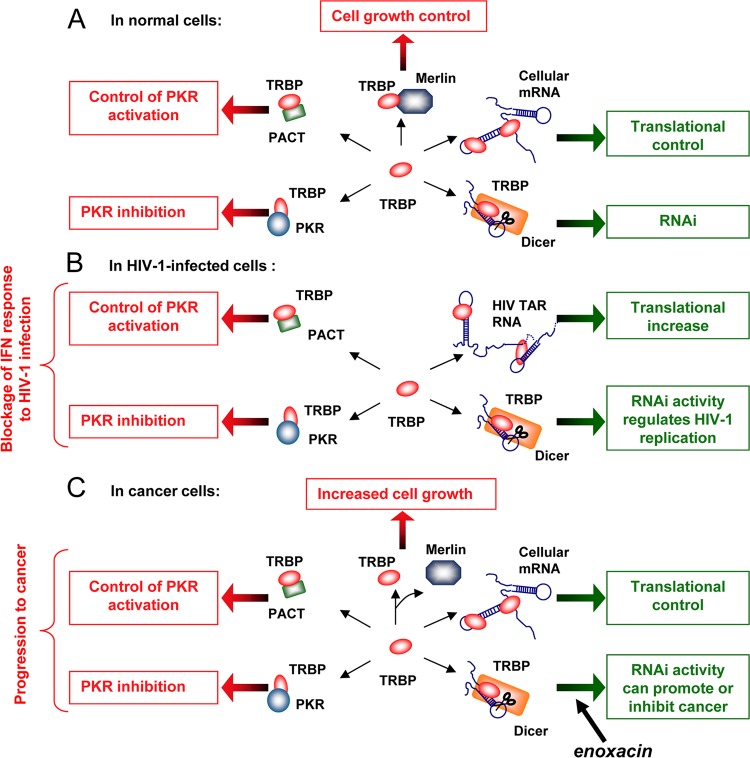Fig 6.
Known and possible interactions and functions of TRBP under normal conditions, in HIV-infected cells, and in cancer cells. (A) Known and possible interactions and functions of TRBP under normal conditions. TRBP interacts with cellular RNAs and miRNAs as well as with Dicer, PKR, and PACT to regulate translation, RNAi, and PKR activation. Its binding to Merlin mediates its degradation and control of cell growth. (B) Known and possible interactions and functions of TRBP in HIV-1-infected cells. TRBP interacts with HIV-1 TAR RNA to increase the translation of HIV-1 mRNAs, while it still binds to cellular mRNAs and miRNAs. TRBP binds to Dicer, PKR, and PACT to regulate RNAi and PKR activation. Its interaction with Merlin has not been tested in infected cells. (C) Known and possible interactions and functions of TRBP in cancer cells. The disruption between TRBP and Merlin leads to an increased TRBP concentration and increased cell growth. The overexpression or truncation of TRBP results in increased binding to cellular mRNA and miRNA, which disturbs translational control. Increased or decreased binding to Dicer may disturb RNAi activity and lead to cancer. The small molecule enoxacin enhances miRNA processing by TRBP and inhibits cancer growth (100). Increased binding to PKR and PACT inhibits PKR activation.

